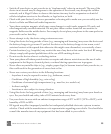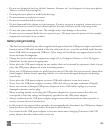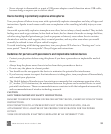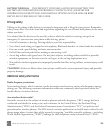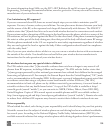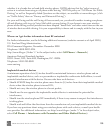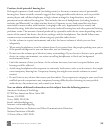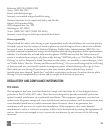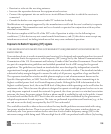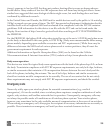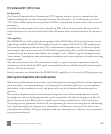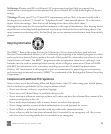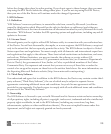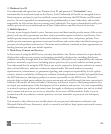
TWOm User Guide - R1.0.2 - October 7, 2010 107
Bethesda, MD USA 20892-2320
Voice: (301) 496-7243
Email: nidcdinfo@nih.gov
Internet: www.nidcd.nih.gov/health/hearing
National Institute for Occupational Safety and Health
Hubert H. Humphrey Bldg.
200 Independence Ave., SW
Washington, DC 20201
Voice: 1 800 CDC INFO (1 800 232 4636)
Internet: www.cdc.gov/niosh/topics/noise/default.html
Drive responsibly
When behind the wheel, safe driving is your responsibility and it should always be your first priority.
Scientific research on the subject of wireless phone use and driving has been conducted worldwide
for several years. According to the National Highway Traffic Safety Administration (NHTSA), the
available research indicates that using a wireless phone while driving degrades a driver’s performance,
whether it is a hands-free or hand-held wireless phone. NHTSA advises that the “safest course of
action is to refrain from using a cell phone while driving.” NHTSA’s policy on “Cell Phone Use While
Driving,” as well as Frequently Asked Questions on the subject, are available at www.nhtsa.gov (click
on “Traffic Safety” then on “Drowsy and Distracted Driving”). For your well being and the well being
of those around you, you should consider turning your phone off and allowing calls to go to Voice
Mail while you are driving. If you choose to use your wireless phone while driving, several
jurisdictions have adopted “hands-free” and other restrictions on the use of wireless devices while
driving. It is your responsibility to know and to comply with the law in your area.
REGULATORY AND COMPLIANCE INFORMATION
FCC notice
This equipment has been tested and found to comply with the limits for a Class B digital device,
pursuant to Part 15 of the FCC rules. These limits are designed to provide reasonable protection
against harmful interference in a residential installation. This equipment generates, uses and can
radiate radio frequency energy and, if not installed and used in accordance with the instructions, may
cause harmful interference to radio communications. However, there is no guarantee that
interference will not occur in a particular installation. If this equipment does cause harmful
interference to radio or television reception, which can be determined by turning the equipment off
and on, the user is encouraged to try to correct the interference by one or more of the following
measures:



